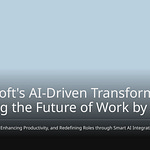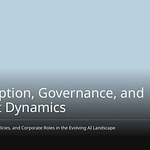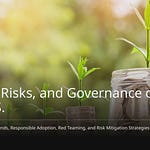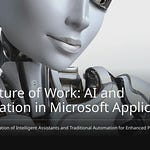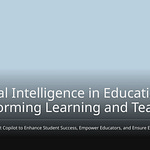AI’s increasing energy consumption is a significant environmental concern. Currently, AI in data centers accounts for a small fraction of global energy use. However, experts project that data centers will double their power consumption by 2030, with the majority of this increase coming from fossil fuels. This will lead to a substantial rise in carbon emissions, highlighting AI’s growing impact on the planet. Microsoft, a major tech player, has committed to an ambitious plan, investing $80 billion in AI data centers with the goal of achieving carbon neutrality. This initiative, often referred to as Microsoft’s push, aims for greater sustainability. The question remains whether this push is sufficient to address the climate crisis and what challenges still persist for AI sustainability. Therefore, a thorough examination of their efforts is crucial.
Key Takeaways
AI uses much power. This power comes from computer buildings. These buildings often burn dirty fuels. This makes a lot of pollution.
Microsoft puts money into clean AI. They use clean power for computer buildings. They also make machines work better. They give tools to watch pollution.
Microsoft’s pollution has gone up. This is because AI grew fast. This growth makes it hard to hit zero pollution goals.
AI can help fix nature problems. It can make systems work best. It can add clean power. It can also make trash handling better.
We need to see more clearly. AI programs should use less power. The AI world needs clean ways. This will make AI truly last.
AI’s Environmental Impact
Energy Consumption of AI
AI systems use a lot of energy. Training big AI models needs huge computer power. This is true for large language models. Many GPUs run all the time for months. This uses a lot of electricity. This process uses special computers. These include GPUs, TPUs, and CPUs. AI models use energy even after training. This is called inference. For example, a ChatGPT question uses more electricity. It uses five times more than a simple web search. This high energy use affects our planet.
Data Center Carbon Footprint
AI needs a lot of computing power. This leads to high electricity use. Data centers hold AI computers. They often get power from fossil fuels. This adds a lot to air pollution. One study said training one AI model. It could make 552 tons of carbon dioxide. Many new data centers are being built. Most of their power comes from burning fossil fuels. These places also need good cooling. Data centers use cold water to cool. They use two liters of water for each kilowatt-hour of energy. A normal data center can use 300,000 gallons of water every day.
Resource Depletion Concerns
Making AI hardware also harms the environment. Making computer parts like GPUs needs rare minerals. Getting these minerals damages nature. For example, Yttrium is in computer chips. It makes them more stable for fast computing. Praseodymium helps hard drives. It lets them handle high heat from AI. Cerium makes parts conduct electricity better. Gadolinium changes computer chip properties. This makes memory systems better. Europium also makes AI systems work better. China has 70% of these rare minerals. This makes it risky for supplies. This control makes it hard for technology to grow. These parts also do not last long. This creates more electronic trash. This further harms our planet.
Microsoft’s AI Sustainability Initiatives
Microsoft works hard. It makes its AI operations greener. The company focuses on key areas. These areas include using clean energy. They make hardware work better. They also create green AI tools. They use circular economy ideas. These efforts help their green goals.
Renewable Energy for Data Centers
Microsoft puts a lot of money into clean energy. They want their data centers to use 100% carbon-free energy. This is by 2025. For example, they made a big deal. It was for $6.2 billion. This was in Northern Norway. Their data centers there use only hydropower. This greatly cuts down pollution. It helps Microsoft reach net-zero. This shows they want to cut carbon.
Hardware Efficiency and Cooling
Microsoft creates new ways. These make hardware better. They also improve cooling. They use microfluidics. This is a special cooling system. It carves tiny paths. These are on silicon chips. Liquid coolant flows right over hot spots. This cools much better. It beats old ways. It can lower chip heat by 65%. Microsoft also uses AI. It makes cooling better. AI finds hot spots. It sends coolant there. They also make special AI chips. One is the Azure Maia AI Accelerator. These chips do work better. This saves energy in data centers. Hollow Core Fiber (HCF) cable also helps. It sends data faster. This makes data centers work better. These green solutions are very important.
Green AI Tools and Frameworks
Microsoft gives tools to others. These tools help with being green. The Azure Carbon Emissions Calculator helps. Customers can track cloud pollution. Microsoft also uses AI for green goals. This is in its own work. AI checks, records, and reports. It shows environmental impact. It makes building energy better. It tracks carbon and water use. These tools help cut pollution. They offer good green solutions.
Circular Economy Principles
Microsoft uses circular economy ideas. They work to make less trash. They reuse and recycle parts. This makes equipment last longer. It uses fewer resources. This way helps their long-term green goals. It helps the world reach net zero.
Checking If It’s Enough: Good Points and Missing Parts
Microsoft wants AI to be green. This is very clear. They lead the way. They work on a huge scale. But, if we look closer, we see good things. We also see some problems. These problems make us wonder. Are their efforts truly enough?
Good Points: Leading the Way and Big Impact
Microsoft is a top company. They lead in green AI. They use their many resources. This helps make changes. Their work shows how AI can fix big nature problems. For example, Stuttgart city made a 3D copy. It took only 24 hours. They used AI to guess rain. They also saw how water flows. They could test flood plans. This made things 99% faster. In Japan, two companies used Azure tools. They guessed what people would buy. This cut food waste by half.
Microsoft also works with science groups. One lab in Washington worked with them. They used AI tools. They found 18 good battery materials. They started with 32 million choices. This took only 80 hours. This used to take many years. These show AI’s power for good. Microsoft also uses AI to check green data. This includes carbon, energy, and water use. They make energy better. AI matches clean energy supply and need. AI also balances power use. It adds different energy sources. This saves money. It also helps nature. AI makes buildings, schools, and cities better. It uses smart sensors. This helps manage resources. These efforts show Microsoft’s strong green push.
Problems: Pollution and Not Being Clear
Microsoft has big problems. Their carbon pollution went up. This makes us ask questions. Is what they are doing enough? Microsoft’s total carbon pollution grew. It went up 29.1% from 2020. This rise is mostly from indirect pollution. This pollution went up 30.9%. New data centers cause this. This includes carbon from building stuff. Things like concrete and steel. It also includes computer parts. Things like chips, servers, and racks. Microsoft says these are special problems. They are a top cloud company. They are building many data centers fast. This also shows bigger industry problems. It is hard to make greener materials and parts.
Microsoft’s indirect pollution went up 30.9%. This was between 2020 and 2023. The company’s total pollution rose over 29%. This happened even with less direct pollution. Direct pollution went down 6.3% in 2023. This shows they are not fully clear. Microsoft does not report all indirect pollution. They leave out investments. They say it is not important. But, Microsoft owns a lot of OpenAI. OpenAI uses much energy for AI. This pollution is not clearly reported. This makes it hard to know their full impact.
AI Growth Versus Cutting Pollution
AI is growing very fast. This makes it hard to cut pollution. Microsoft puts a lot of money into AI. This growth makes it harder. It is harder to reach zero pollution.
Microsoft’s spending shows their plan. They want to grow AI. In early 2025, they spent $21.4 billion. They plan to spend over $30 billion in 2025. This means AI is a top focus. It means building more data centers. Azure AI services are also growing fast. They grew 42%. This is because many want big AI models. This fast growth causes more pollution. It makes reaching zero pollution harder. Microsoft tries hard to be green. But, AI grows so fast. It often grows faster than green efforts. This makes it a constant hard fight.
AI for Sustainability: Driving Broader Goals
AI has strong tools. They help with nature problems. Microsoft uses AI a lot. It makes things better for the future. This plan fits their bigger goals. These goals are for a green world.
Optimizing Complex Systems
AI makes managing hard systems better. It helps guess and improve things. This leads to green answers. AI looks at data. It uses machine learning. It also guesses what will happen. This helps cities make smart choices. For example, AI can guess how much power homes need. It finds wasted energy in buildings. AI also checks how city actions affect nature. These ideas help cut carbon emissions. They make things more green. Also, AI makes factories use less energy. It makes things work better. This saves energy for each product. This shows AI helps a lot with being green.
Integrating Renewable Energy
AI is very important. It helps reach zero pollution. It helps put clean energy into power lines. AI checks data. It looks at power needs. It sees power cuts. It also sees power made. This makes power flow well. It stops blackouts. It makes sure power goes out well. Here are ways AI helps with clean energy:
Collaboration and Standards
Microsoft knows working together is key. It makes being green happen faster. They work with others. They set rules for good AI. This helps the world reach zero pollution. For example, Microsoft works with G42. They made two centers in Abu Dhabi.
One center makes good ways and rules for good AI. This is for the Middle East and Global South.
The second center makes Microsoft’s AI for Good Research Lab bigger. It works on AI projects for world goals. This includes making nature stronger. It uses AI with detailed map data. This team-up also includes Abu Dhabi’s Artificial Intelligence and Advanced Technology Council (AIATC). They want to make Abu Dhabi better in AI. Microsoft and G42 promise good AI rules. They make sure their generative AI models are safe. They follow Microsoft’s rules. These team efforts help green answers worldwide.
Speeding Up Being Green: What We Need Next
Being More Open and Reporting More
Being truly sustainable in AI needs more. We need to be more open. We need to report more. Builders must measure how they affect nature. They must share this at every step. This includes making and using models. Companies need to add all AI nature impacts. They must put this in their green reports. Rules for checking facts will make data true. Lawmakers must make clear rules. This makes sure everyone reports the same way. Tools like Code Carbon help guess energy use. Green Algorithms also helps. The AI Energy Score project gives a standard way. It helps compare models. Numbers should be in model cards. They should be in science papers. They need full details. This means hardware, place, and power sources. This helps in accelerating sustainability efforts.
AI Models That Use Less Energy
The industry also needs to make models. These models must use less energy. Research tries to build energy saving into designs. DARPA’s ML2P program does this. It balances how well it works. It also balances how much energy it uses. This is key for AI. It is key in places with little power. The Department of Energy also makes apps better. They make chips better. They make better ways to solve problems. They make computer systems better. They make data centers better. These efforts cut down AI energy use. This helps make better sustainability solutions.
Green Ways for the Whole System
The AI industry needs green ways. These ways must be for the whole system. AI for sustainability can make shipping better. This cuts carbon emissions. It cuts them from deliveries. It cuts them from warehouses. It can also find ways to reuse things. It can find ways to recycle things. This is in making products. This makes less trash. AI helps watch nature. It tracks animals and plants. It tracks pollution for saving nature. Smart grids use AI. They share power better. They add clean energy. AI also helps manage trash. It sorts things to recycle. It makes trash pickup better. This helps a circular economy. These ways are key for accelerating sustainability.
Always Making New Things and Being Responsible
Always making new things is key. Being responsible is key. This is for green AI growth. Companies must put first diverse teams. They must put first diverse data. This makes things less unfair. They need strong privacy. They need good data safety. Systems need ways to be responsible. Clear duties are important. Always checking and changing makes things better. MLOps ways make people responsible. They use version control. They use audit trails. Responsible AI Dashboards show causes. They show how inputs change choices. Good rules are key. They balance new ideas. They balance risks. Rules like NIST Risk Management help. The EU Act guides good growth. The Center for American Progress wants a national plan. This makes sure AI is safe. It makes sure AI is trusted. It helps sustainability solutions. It helps the global race to net zero. This builds climate resilience. More money for green infrastructure is also needed. This is for accelerating sustainability efforts.
Microsoft shows good progress. They put a lot of money into green AI. They lead the way in this. But AI is growing fast. This causes problems. Emissions are going up. Microsoft’s effort is big. But we need more new ideas. We need to be more open. We need more teamwork. We need to be more careful. This will make AI truly green. These steps will help for the future.
FAQ
What is Microsoft’s main goal for sustainable AI?
Microsoft wants to be carbon neutral. It puts $80 billion into AI data centers. The company wants to use only clean energy. This is for its data centers by 2025. This shows it really cares about green AI.
How does AI affect the environment?
AI uses a lot of energy. This is for training and working. Data centers hold AI. They add to carbon in the air. They also use much water to cool. Making AI hardware uses up rare minerals. It also makes electronic trash. 🌍
What specific steps does Microsoft take for green AI?
Microsoft uses clean energy. This is for data centers. It makes better hardware. It also makes better cooling. The company gives green AI tools. These include carbon calculators. It also reuses and recycles things. This helps cut waste.
Are Microsoft’s current efforts enough for sustainable AI?
Microsoft makes big steps. It puts in much money. But AI is growing fast. This makes its carbon footprint bigger. The company’s pollution has gone up. This is because data centers are growing. We need more openness. We need new ideas all the time.
Tip: Green AI needs work from all tech companies. Not just one.





